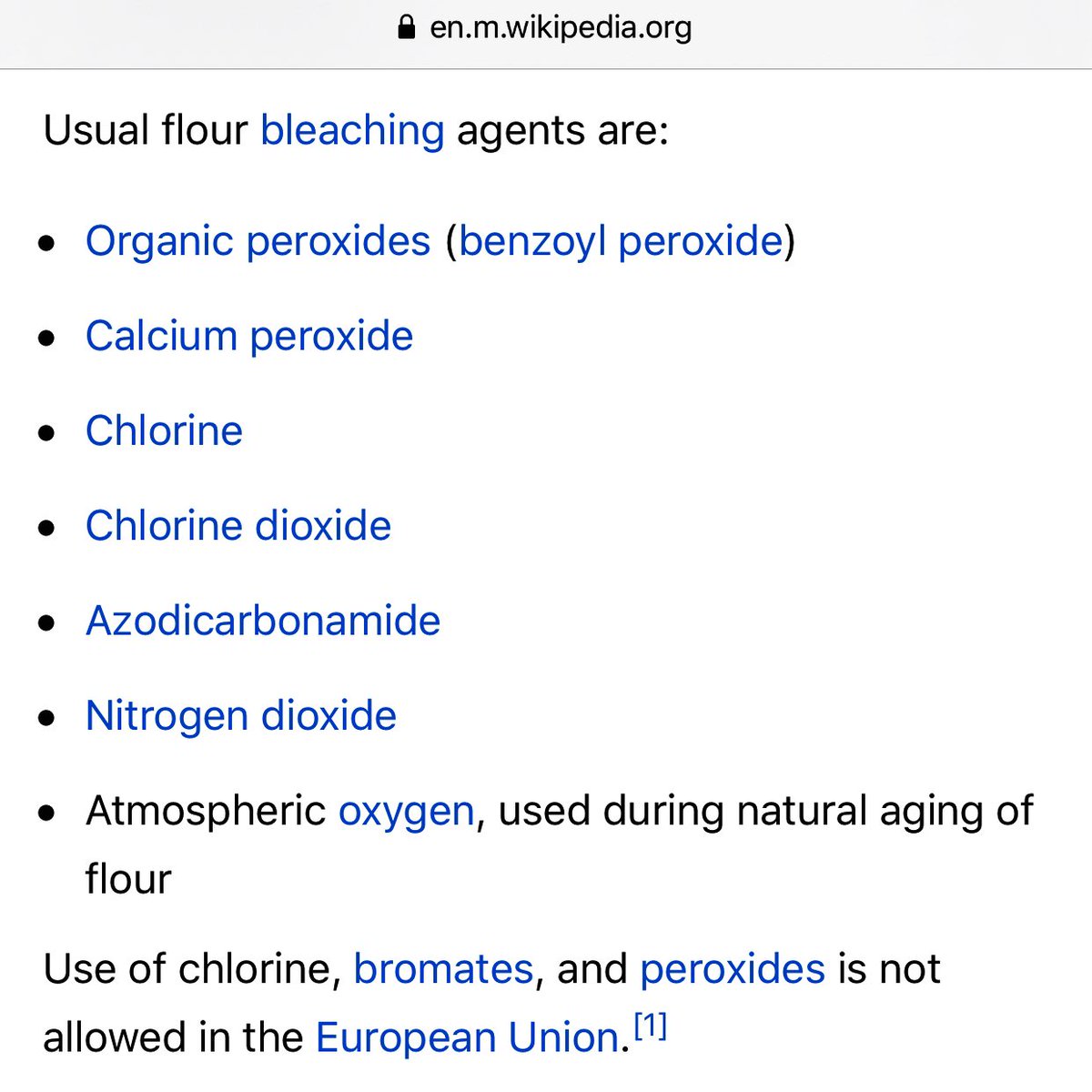Flour bleaching agents مبيضات الدقيق
مرسل: الثلاثاء مايو 15, 2018 1:26 pm
Flour bleaching agents مبيضات الدقيق
Benzoyl peroxide
بنزويل بيراوكسيد
له تأثير على خواص الجلوتين ولكن طفيف فى وجود المحسنات الاخرى مثل الاسكوربيك .
Benzoyl peroxide
بنزويل بيراوكسيد
له تأثير على خواص الجلوتين ولكن طفيف فى وجود المحسنات الاخرى مثل الاسكوربيك .
For a long time benzoyl peroxide was a familiar oxidative bleaching agent, and it is used to this day in flours for export.
In addition to its good bleaching effect it has a slight influence on the structure of the gluten, but this is not apparent when other flour improvers such as AA (E300 ascorbic acid) are used.
dosage :- نسبة الاضافة الى الدقيق
The dosage for benzoyl peroxide is about 2 - 7 gm to 100 kg of flour (20 - 70 gm for 1000 kg "ton"). The effect of benzoyl peroxide on the flour is already visible
after 24 to 72 hours of storage.
--------------------------------------
Usual flour bleaching agents are:

Organic peroxides, namely benzoyl peroxide
Calcium peroxide
Nitrogen dioxide
Chlorine
Chlorine dioxide
Azodicarbonamide
Atmospheric oxygen, used during natural aging of flour
Use of chlorine, bromates, and peroxides is not allowed in the European Union.
Chlorinated cake flour improves the structure-forming capacity, allowing the use of dough formulas with lower proportions of flour and higher proportions of sugar. In biscuit manufacturing, use of chlorinated flour reduces the "spread" and provides a tighter surface. The changes of functional properties of the flour proteins are likely to be caused by their oxidation.
In countries where bleached flour is prohibited, plain flour can be treated in a microwave oven to produce similar chemical changes to the bleaching process. This improves the final texture of baked goods made to recipes intended for bleached flours.
In addition to its good bleaching effect it has a slight influence on the structure of the gluten, but this is not apparent when other flour improvers such as AA (E300 ascorbic acid) are used.
dosage :- نسبة الاضافة الى الدقيق
The dosage for benzoyl peroxide is about 2 - 7 gm to 100 kg of flour (20 - 70 gm for 1000 kg "ton"). The effect of benzoyl peroxide on the flour is already visible
after 24 to 72 hours of storage.
--------------------------------------
Usual flour bleaching agents are:

Organic peroxides, namely benzoyl peroxide
Calcium peroxide
Nitrogen dioxide
Chlorine
Chlorine dioxide
Azodicarbonamide
Atmospheric oxygen, used during natural aging of flour
Use of chlorine, bromates, and peroxides is not allowed in the European Union.
Chlorinated cake flour improves the structure-forming capacity, allowing the use of dough formulas with lower proportions of flour and higher proportions of sugar. In biscuit manufacturing, use of chlorinated flour reduces the "spread" and provides a tighter surface. The changes of functional properties of the flour proteins are likely to be caused by their oxidation.
In countries where bleached flour is prohibited, plain flour can be treated in a microwave oven to produce similar chemical changes to the bleaching process. This improves the final texture of baked goods made to recipes intended for bleached flours.